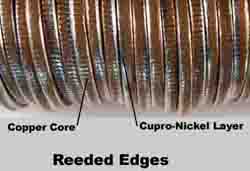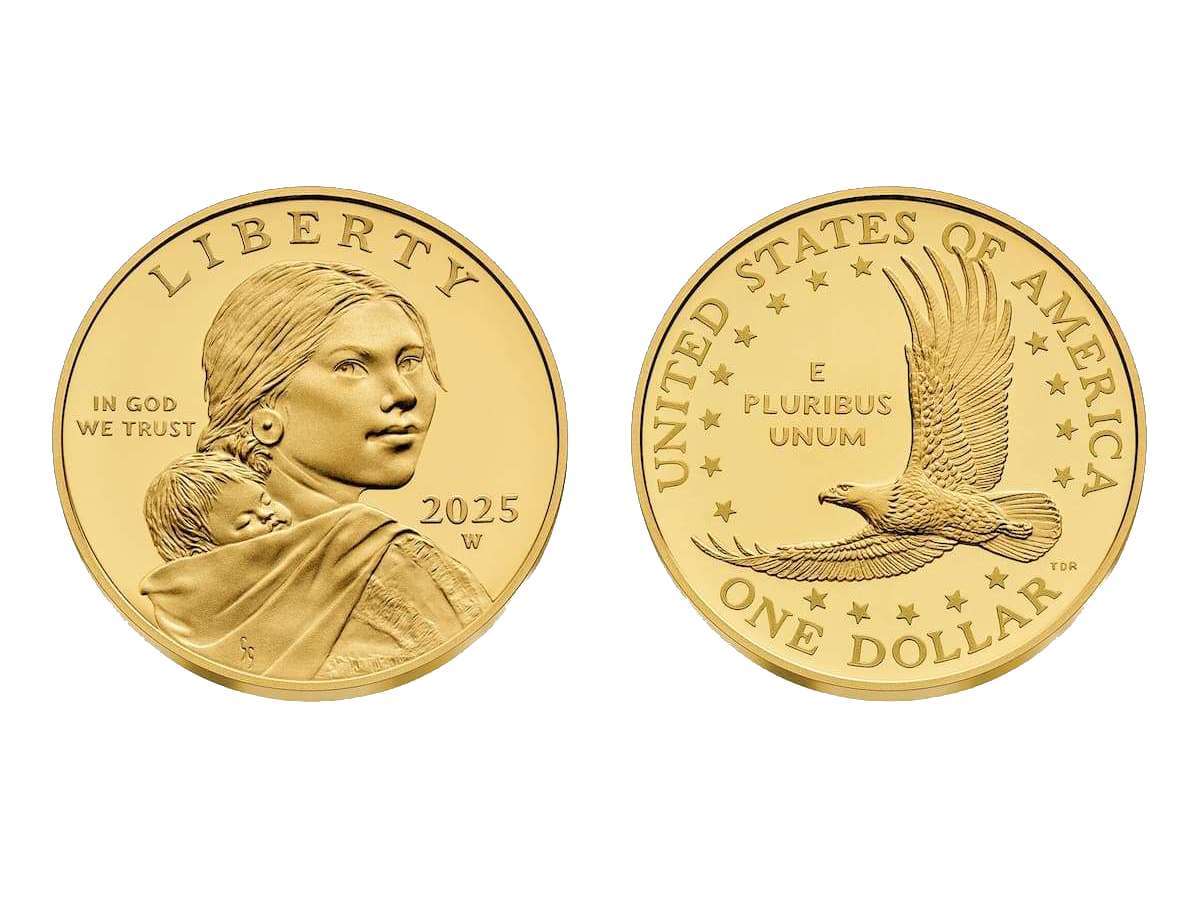What is the difference between the rim of a coin and the edge of a coin?
Is there even a difference at all? Aren’t they sort of the same?
Not really…
I’m going to show you how to tell the rim of a coin apart from the edge of a coin and explain why these differences are so important to coin collectors.
If you’re searching your pocket change for rare coins or even error coins, chances are you’re already examining the edges and rims of the coins that pass through your hands in search of something valuable.
So, which is which?
Let’s dive into the differences between the rim of a coin and edge of a coin…
What Is The Rim Of A Coin?
The rim of a coin is the border that encircles the obverse (often called the head’s side) and reverse (also known as the tail’s side).

Take a look at just about any coin in your pocket change and flip it to the back or front…
The rim is the raised part of the design that sort of frames the main design of the coin.
On most modern coins, the rim is just a moderately thin to thick circular line. But many classic coins show far fancier rims with ornamentations — such as denticles, dots, and other decorative elements.
The rim belongs to either the obverse or reverse of the coin. It’s a part of the design and is struck onto the coin with the aid of the retaining collar — which holds a coin in place on the press as it’s being struck and helps to form the rim.
Why do coins have rims?
So, what’s the coin rim for, anyway?
There are several reasons coins have rims:
- Coin rims add an artistic element, finishing the look of the coin
- Rims help protect the inner, important parts of the design from wear
- The rim can help deter shaving of the metal from the edge of the coin
- A rim can assist the die in properly striking up the design
What Is The Edge Of A Coin?
The edge of a coin is that thinnest or narrowest part.
While many folks don’t seem to give much thought to the edge of a coin, it’s formally known as the third side of a coin. (Yes, standard coins really do have three sides!)

If you’ve handled enough coins, you’ll also know that not all edges are created equal. There are many kinds of edges, including:
- Plain edges — The Lincoln cent, Jefferson nickel, and Sacagawea dollar struck from 2000 through 2008 are the most commonly encountered modern United States coins with plain edges. These edges have no ornamentation on them whatsoever and feel smooth to the touch.
- Reeded or milled edges — What the British call “milled” edges, Americans dub “reeded” edges. These are seen on Roosevelt dimes, Washington quarters, Kennedy half dollars, Eisenhower dollars, Susan B. Anthony dollars, and many other U.S. coins. The lines themselves are called reeds (not grooves, not wedges) and feel distinctive when rubbed against your finger.
- Lettered edges — Lettered edges were very common on U.S. coins in the earlier part of the 19th century and seen sporadically on some coins up until 1933. They reappeared on circulating United States coins in 2007 with the debut of the Presidential $1 coins and is a feature that has been used on other U.S. coins since. Edge lettering can help save canvas space for larger or more elaborate designs on the obverse and reverse.
- Security edges — These edges are designed to thwart counterfeiters from replicating real coins and help to reduce fakes and forgeries. One of the latest examples of a security edge on a U.S. coin is on new American Silver Eagles made since 2021, which show a missing reed on the edge. Other types of security edges may feature a mix of reeds, plain segments, lettering, and more.
- Decorated edges — Early American large cents, the Indian $10 eagle gold coins, and several other American issues have had decorated edges, which feature stars, vines, or other decorative but non-lettered design elements. Decorated edges can serve every bit as much an ornamental role as they do a functional one in dissuading counterfeiters from creating fakes.
- Grooved edges — Not to be confused with the so-called “grooves” that are more correctly called reeds, grooved edges of a coin are those which feature a channel running parallel along the long side of the edge. It may almost appear as though the two main faces of the coin were welded together. One of the most commonly known coins with a grooved edge is the Euro two cent — something Americans don’t see every day circulating in the states but might encounter on a trip to Europe.
What role does the edge of a coin play?

Not to sound too snarky, but surely every 3-dimensional object has to have a third edge. Even a piece of paper does, and we all know they’re great at dishing out some of the most painful cuts! (OK, just a little snark…)
But, in all seriousness, the edge of a coin — and particularly the different types of edges — do have important functions:
- Different types of edges can help the blind or those picking up coins without looking at them tell denominations apart from one another.
- Edges with reeds, grooves, and other ornamentation can help prevent someone from accidentally dropping a coin.
- The edge space provides room for lettering or other elements, reducing visual clutter on the obverse and reverse and providing room for all necessary design components.
- A security edge mitigates counterfeiting activity by making it harder to accurately replicate the appearance of a real coin.
- Reeded, decorated, and other types of adorned edges eliminate edge shaving — which was popular years ago with precious-metal coins whose very flakes could be monetarily worth scrapping.
Coin Rim Errors & Coin Edge Errors To Look For

There are many kinds of error coins and varieties with oddities involving the rim or edge.
Here are a few coin rim errors and coin edge errors that are worth looking for:
- Broadstrikes — A broadstrike occurs when a coin isn’t struck inside its retaining collar. Broadstrikes are wider and thinner than normal and lack a finished rim and edge. These peculiar errors are collector favorites!
- Die cuds — As dies age, they can begin to crack or split. If one of these cracks occurs at or near the rim, it might cause a type of defect known as a cud. Die cuds are blobs of raised metal attached to the rim, and values depend on the size and magnitude of the cud.
- Clipped edges — Coin blanks are cut from huge ribbons of metal, but sometimes the circular cuts aren’t exactly circular. If the blank wasn’t cut correctly or was fashioned near the edge of the strip, it might have a clipped edge.
- Missing edge lettering — One of the most popular of these is the so-called Godless dollar, which arose on some 2007 Presidential dollars that were missing their edge lettering. At the time, the motto “IN GOD WE TRUST” was supposed to be incused on the edge, so coins missing the lettering naturally omitted “IN GOD WE TRUST,” too. Hence, many collectors ominously called these “Godless” dollars, and the name stuck.




